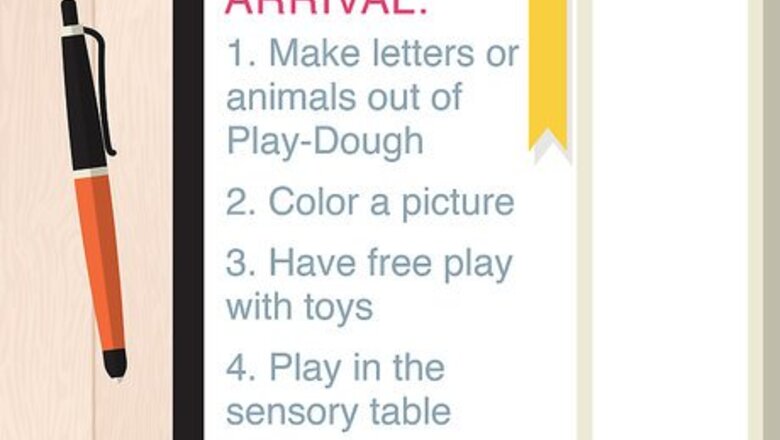
views
Brainstorming and Getting Ideas
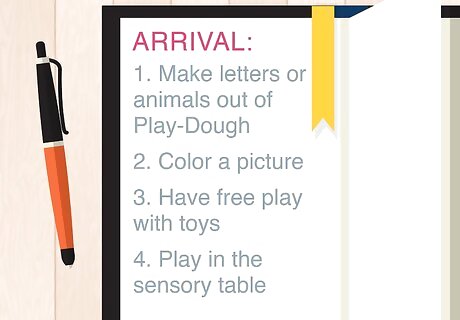
Start with a piece of paper and write down all of your ideas for "Arrival." Here are some to get you started: make letters or animals out of Play-Dough, color a picture, have free play with toys, play in the sensory table, look at books, join in taking care of baby dolls, do puzzles, identify and find plastic shapes, search for everything in the classroom that begins with one letter, sit and sing along to with a CD.
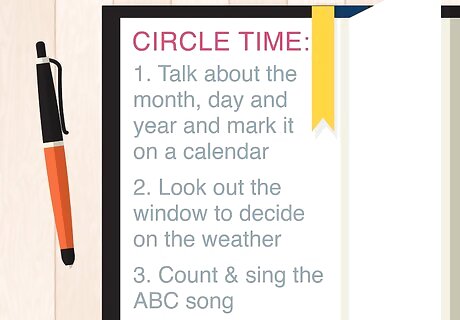
Go on to "Circle Time." Here are some more ideas: talk about the month, day and year and mark it on a calendar. Look out the window or watch a weather report to decide on the weather, dress a doll or stuffed animal in what they would need to wear depending on the weather and sing a welcome song together. Count, sing the ABC song, review shapes and colors, and introduce all of the centers. Read a story, classroom rules, or teach children an action poem.
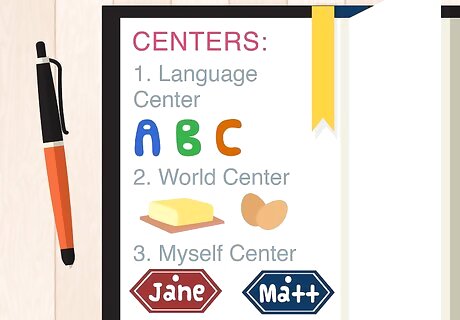
Start thinking about centers. What will you teach in the Language Center? Will the children learn a letter and trace it, write it in the sand, do puzzles about it, or design on an Etch-A -Sketch? Learning about numbers and shapes is a good ideas. Design shapes on a pegboard. Count small objects. Measure the length of the classroom or measure a pencil with paper clips. Explore making butter for a farm week in The World Center. Type your name in the Myself Center. Play on an online learning website such as www.abcmouse.com or www.beyondthebackpack.com.
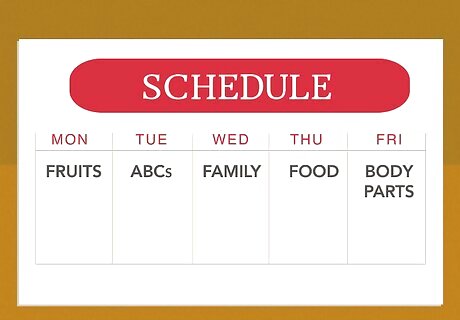
Another way to plan a curriculum for preschoolers is to take a calendar and write down the main objects that you are going to teach each week. Make sure that it covers what children need to learn for Kindergarten and that it is practical information and objects. Ask yourself: "Why do children need to learn this?" and "How will this help them in life?"
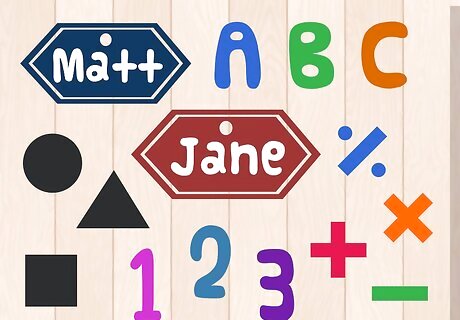
Look at the following lists of objects to teach children. This is a great list to stick to, though there may be other things that you find that children should learn. In Reading/Language Arts teach: the alphabet, left to right, sight words, memory, same and different, how to take care of books, and how to write. Don't worry about formal writing. Just let children draw pictures or write down something about their day. In Math teach: numbers and counting, shapes, measurement, comparing, sizes, addition, subtraction, patterns, money and telling time. In The World teach: animals and their habitats, seasons, weather, days of the week, months of the year, dates, years, plants, space, water, magnets, holidays, playground safety, animal safety, swimming and bicycle safety, and home and stranger safety, and the scientific method. In Myself teach each child's name, phone number, address, family, friends, pets, school, birthday, body parts, and emotions.
Writing A Rough Draft
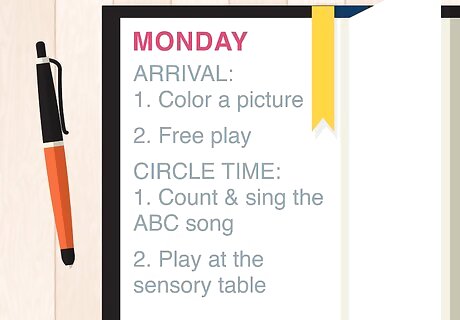
This is for Monday. Go onto all of the days of the week Monday-Friday using this format. Start a paper that says: "Arrival." Write down all of the ideas that you may have for the arrival time. Could children play in the different centers? Will you plan on a ABC tracing cards and puzzles activity? Continue onto "Circle time." How should teachers have calendar and weather? What songs will you sing? What story will you read? What activity should they conduct? What will you review?
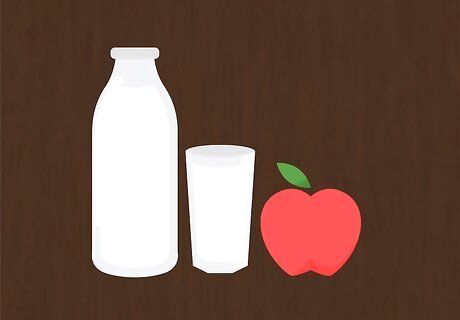
Move on to the snacks and meals. What will the children eat? Remember all five food groups is important, all lunches should be healthy. See your school board or board of health. It is also a good idea to have snacks reinforce other parts of the curriculum. Have apples when learning about the fall. Eat circle crackers or orange oranges.
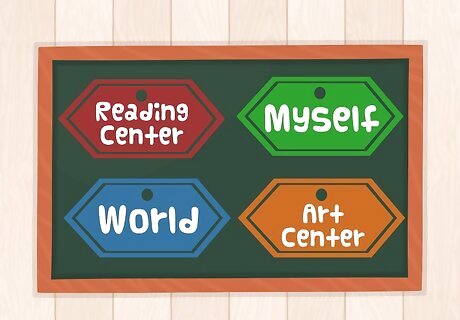
Label your next section: "Centers." These are some great and centers that you should include: Reading/Language Arts, Math, The World (simple science and social studies), Myself (all about the child's personal information, name, family, etc.), Art, Music, Sensory Table, and Technology. Think about what you want to start with for language arts or reading. Will you teach the alphabet or sight words? Provide two activities to teach the day's object. Pick out an idea from your brainstorming list.
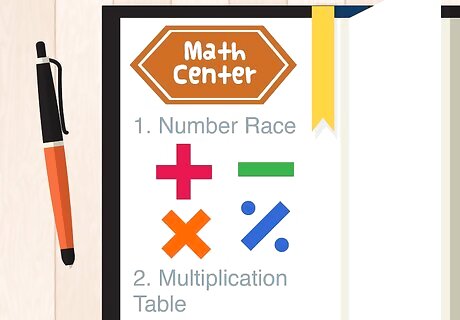
Continue with this same format for Math, The World, Myself, and Music. For art, come up with a project that reinforces one of the day's objects. Be careful not to provide samples and to not choose a craft that needs a lot of step-by-step directions. You want to encourage creativity, not stifle it.
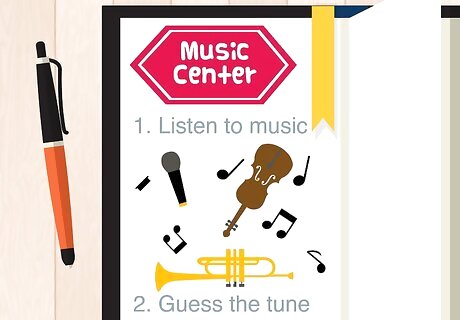
For music, think about what songs you will sing and what instruments you will introduce to the children. Will you play a game that asks children to see if the music is loud or soft or slow or fast? Try to write down at least four options.
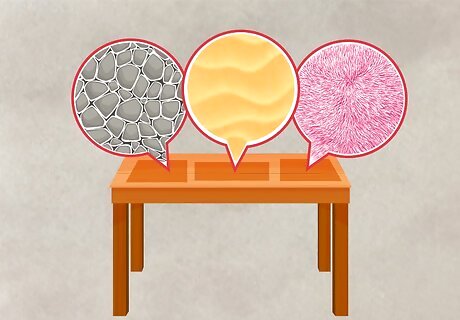
For the sensory table center, try to pick an idea that reinforces your teaching objects. Read How To Make A Sensory Table to find some great sensory table ideas. Pick one sensory table idea to use each week or every 5 days.
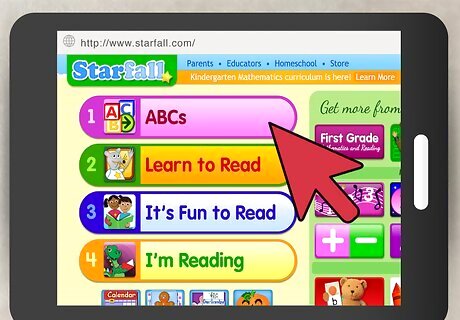
Provide an online learning site to play on for the day. Make sure that you have read How To Test An Online Learning Site For Preschoolers before choosing to write down the site. You can also repeat websites for each day because young children love repetition and teaching them to navigate a different site each day could be chaos and they may not actually get a lot out of the website. Use a learning website that reinforces the objects you are using in your curriculum.
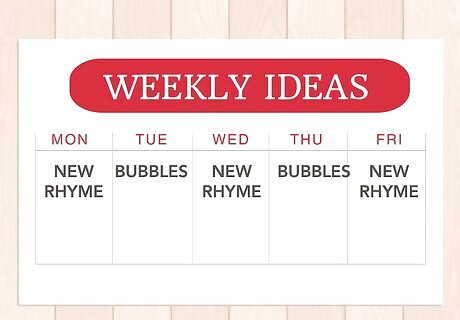
Provide an idea that uses few objects and is quick for each day. Maybe you could suggest that you teach a new rhyme or blow bubbles. Write down an activity idea for each day. This activity should be no longer than 5 minutes and use no more than 2 supplies to do. It is also a good idea to not have to clean-up very much-less than a minute.
Writing A Final Copy
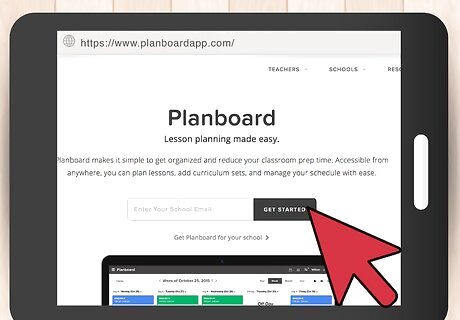
Consider what format you would like to use to write your curriculum. An online website for you to plan books and curriculums is ideal. Or, you could type this curriculum on you computer using Microsoft Word or any other typing place you may have.
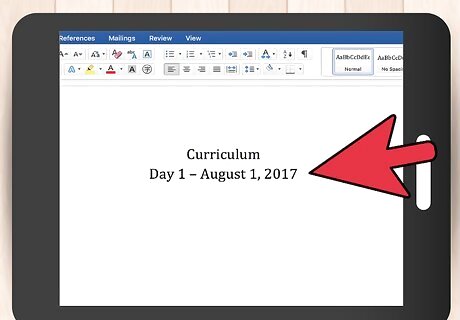
Organize your curriculum. Label each page by days. There should be 180 days or more, because 180 days is how long school last normally. If you live in a country that uses a different number of days in the school year, use this number instead.
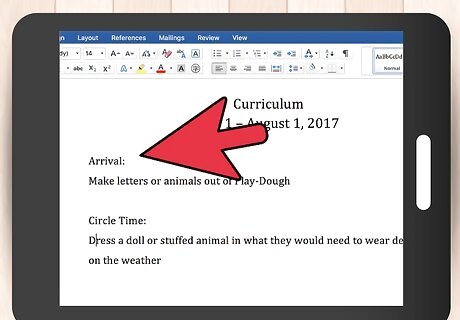
On each day, start with "Arrival" and go through your list of curriculum ideas. Be sure to use correct grammar, spelling, and punctuation. Be sure to include lots of details, to make each step as clear as possible. Another way to be sure that your curriculum is clear is to add pictures of the activities and snacks, crafts, and games.
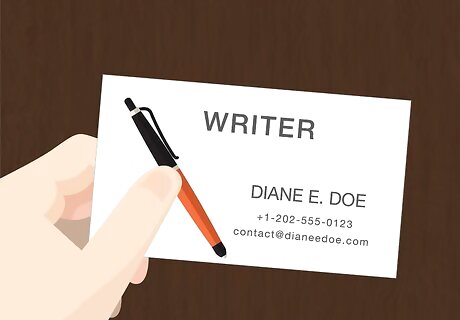
Hire professionals. Hire a writer if you are not the best writer and hire an artist to draw pictures for you. Always hire an editor to catch any mistakes and make your curriculum better.
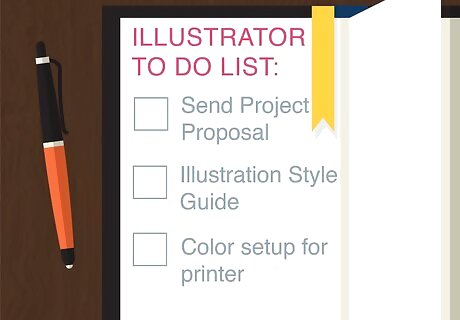
When working with those you have hired, always check on what they are doing to be sure that they are doing what you are okay with and always ask them what you can do better so that you can have the best-selling curriculum ever! Talk to your editor or artist and ask them about printing the book in color. Color is appealing to the eye and may make drawings more clear.
Advertising Your Curriculum (optional)
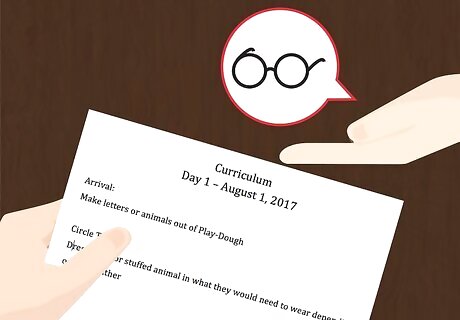
Ask other school and book companies if they want your copy. Tell them about all of the best parts of the curriculum to get them interested. Show them the curriculum.
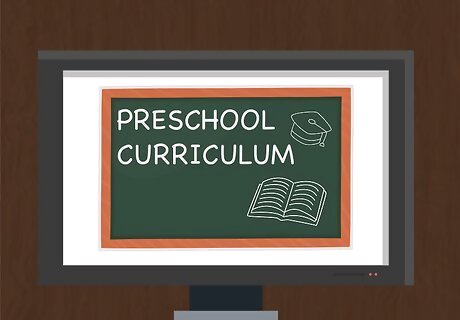
Write a TV commercial. Hire actors and someone to write your commercial. Talk about all of the best parts of the curriculum and show children happily and effectively using it. Provide your information (phone number, website see step 21, and address) so that you can be contacted.

Make a website. You don't have to spend a fortune on website-making because there are some companies out there that offer free website-making such as Weebly. Show pictures on your website of children using it and the curriculum itself, show videos such as your TV commercial, and provide dozens of reasons why you should choose this curriculum.
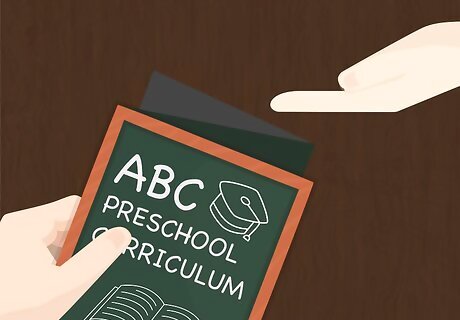
Hand out brochures. Include in your brochure the cost of your products. Also include pictures and information about you curriculum. Explain why the curriculum should be used reviews of happy parents, children, or teachers, and contact information such as a phone number and an address.















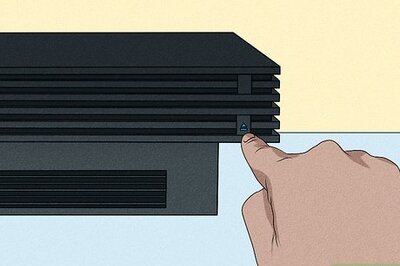


Comments
0 comment